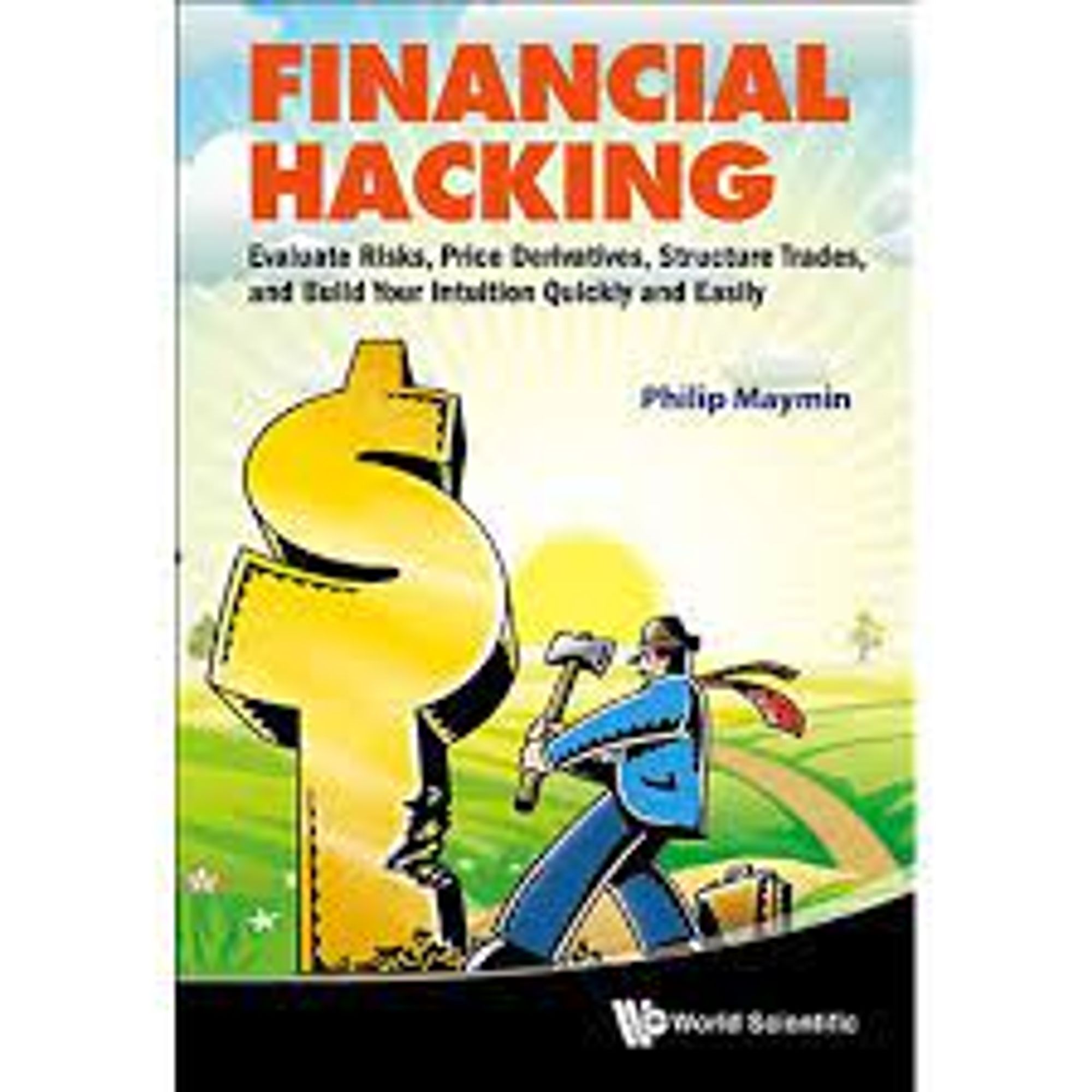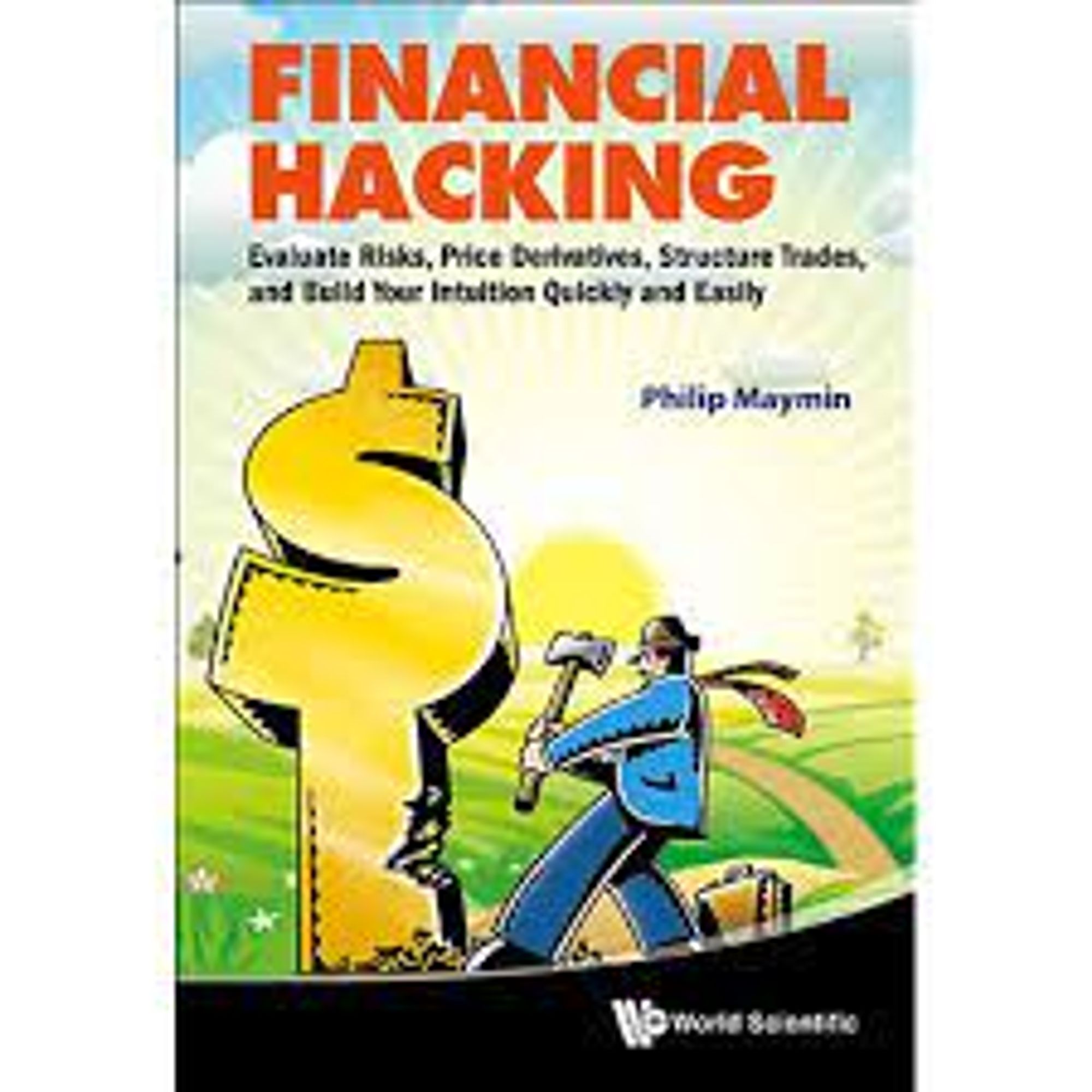Via Amazon Description
This book teaches financial engineering in an innovative way: by providing tools and a point of view to quickly and easily solve real front-office problems. Projects and simulations are not just exercises in this book but its heart and soul. You will not only learn how to do state-of-the-art simulations and build exotic derivatives valuation models, you will also learn how to quickly make reasonable inferences based on incomplete information. This book will give you the expertise to make significant progress in understanding brand new derivatives given only a preliminary term sheet, thus making you extraordinarily valuable to banks, brokerage houses, trading floors, and hedge funds.
Financial Hacking is not about long, detailed mathematical proofs or brief summaries of conventional financial theories; it is about engineering specific, useable answers to imprecise but important questions. It is an essential book both for students and for practitioners of financial engineering.
MBAs in finance learn case-method and standard finance mainly by talking. Mathematical finance students learn the elegance and beauty of formulas mainly by manipulating symbols. But financial engineers need to learn how to build useful tools, and the best way to do that is to actually build them in a test environment, with only hypothetical profits or losses at stake. That's what this book does. It is like a trading desk sandbox that prepares graduate students or others looking to move closer to trading operations.

Personal Thought
I wish I wrote this book. The approach is deeply familiar and resonant — build intuition by tinkering. Since my formal math education pretty much stopped in 12th grade, I had to build intuition for derivatives instead of relying on formulas and proofs.
- The book is a fun read. The tone is conversational — Maymin is talking directly to you. The book is casual. Loaded with quotes from pop culture (esp the Simpsons) on nearly every page.
- The question-and-answer tempo is engaging and highly reminiscent of workflow on a trading desk. A recurring trope is “your boss just said X, how do you respond assuming you don’t have time to come up with a formal presentation”
- While the references to Mathematica might feel dated, the logic is easily transported to Python or your tools of choice.
- I would make this book mandatory reading for someone who has completed a basic finance rotation and has a few months of live trading under their belt. It’s also a great refresher for seasoned traders — especially if you are preparing for an interview.
- You’ll get the most out of this book if you engage with the questions actively. In fact, I’d use this book as a source of interview questions for mid-career traders.
- A practical argument for the “financial hacking” approach:
build intuition so that we can quickly gain deep understanding of even brand new products, faster than the competition. To that end, we don't look to find delicate new pricing formulas, but rather rigorous and useful ways of looking at the problem… If you think of the timeline involved in new products, those who implement well-established pricing formulas are several years late to the party. Those who completely derive what will eventually become well-established pricing formulas are probably about a year late. The purpose of this book is to make you ready to be the first one to trade, when the new product just comes out, and its mispricing is likely at a maximum, or at the very least at its most volatile. It is in times like those that a prepared, flexible financial hacker and trader can pick attractive spots.
Once you have read the book, you may agree with my contention that this is the single most important statement in the treatise:
These kinds of practical issues are ignored in standard textbook discussions of riskless profit opportunities but they are precisely the issues that financial hackers worry about most. And you will almost surely never experience anything with this level of certainty at any time in your career [referencing a trade where you are given the outcome]. There will always be doubts about your model, your inputs, and your forecast. According to standard theoretical concepts of arbitrage, none of those questions matters. According to real-world practical experience, you can't even begin to trade until you have answered all of them.
